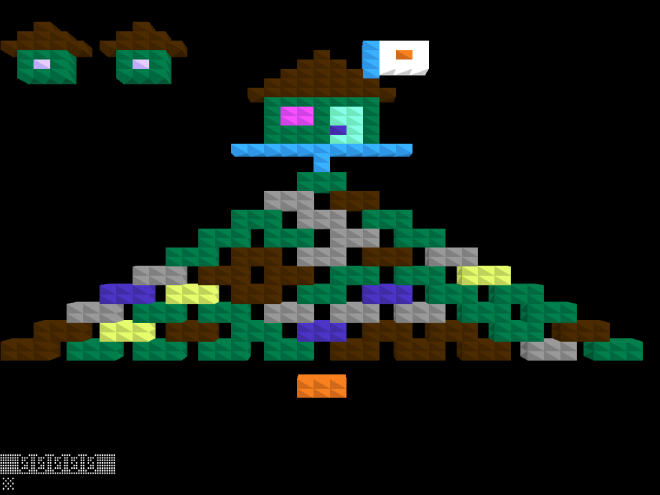I’m proud to announce the preview release of a project I’ve been working on (with my partner April) called DiscoRunner.
DiscoRunner is a multi-dialect BASIC interpreter intended to help people (kids, mainly) learn how to code. Our ‘preview’ release implements Applesoft and Integer BASIC from the Apple II, and comes with source code (or ‘listings’ as they’re known in BASIC) for close to a thousand programs.
 Because we’ve re-implemented the environment rather than ’emulate’ the original computer, we can do fun stuff like render the two dimensional pixels as three-dimensional cubes. In later versions, this will extend to allowing true three-dimensional graphics, along with all sorts of other modern graphics and sounds capabilities.
Because we’ve re-implemented the environment rather than ’emulate’ the original computer, we can do fun stuff like render the two dimensional pixels as three-dimensional cubes. In later versions, this will extend to allowing true three-dimensional graphics, along with all sorts of other modern graphics and sounds capabilities.
There will be compatibility with other classic BASIC environments as well (such as the Atari and Commodore 8-bit computers) and an ‘evolved’ BASIC (DiscoBASIIC) that uses functions instead of line numbers, etc. Also, we’re developing a virtual world where kids can solve challenges using BASIC in a quest to save the world.
Fun and exciting times =)
Check it out at http://discorunner.com
